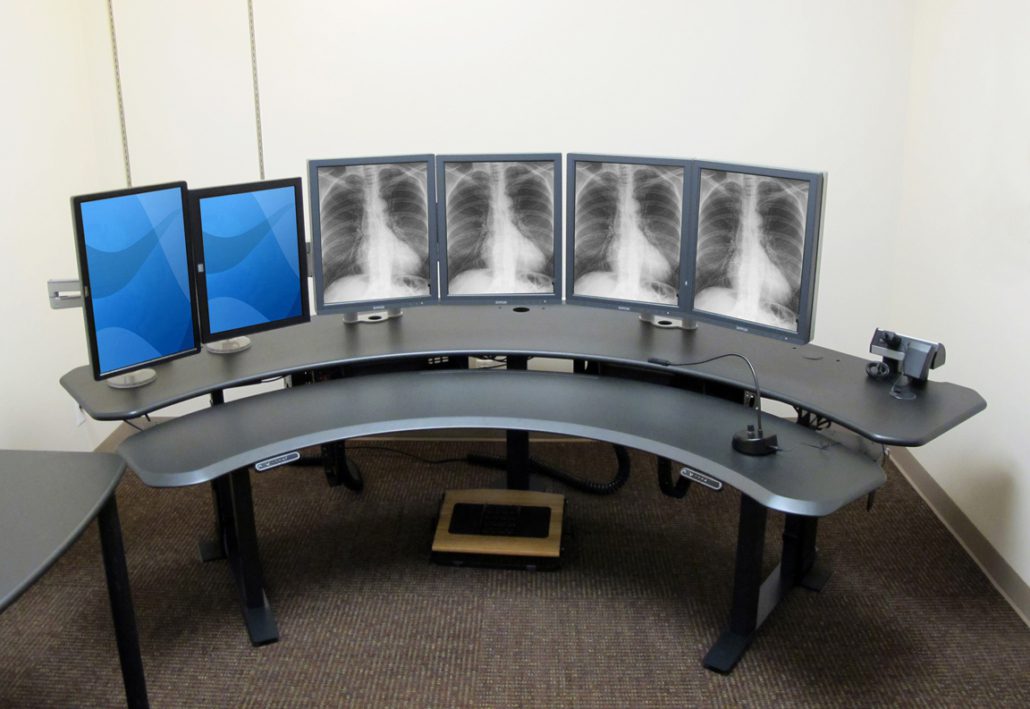Radiology plays a crucial role in medical diagnostics, utilizing imaging techniques to diagnose and treat various diseases. Radiologists, the experts in this field, employ a range of imaging modalities to uncover the causes of symptoms and screen for illnesses. Because of the variety of technical requirements needed for the various modalities, creating a comfortable and optimized work environment is a unique specialty area and essential for radiologists to perform their best. The radiology desks must be available in different sizes to suit various layouts to fit the environment, including a corner work station desk, a desk with a single motorized surface, or a workstation with dual motorized surfaces to accommodate multiple monitors and user preferences.
An adjustable radiology workstation also plays a vital role in preventing injuries and reducing fatigue. With a workstation tailored to their needs, radiologists can stay comfortable, maintain productivity, and achieve clear views of captured images. The various imaging modalities each must be considered in how a workstation is optimized
X-Ray
The most prevalent imaging method, X-rays employ ionizing radiation to examine the body. By focusing radiation on specific areas, X-rays aid in diagnosing fractures, infections, bone loss, and calcifications, while evaluating treatment effectiveness.
Ultrasound
Using high-frequency sound waves, ultrasound captures organ images. It is non-invasive and commonly used for diagnosing breast lumps, joint inflammation, and guided biopsies. Also, it is safe for pregnant women due to its lack of radiation exposure.
CT Scan
Computed Tomography (CT) scans employ a series of x-rays to produce detailed cross-sectional images. Often utilized for trauma assessment, bone fractures, cancer detection, and evaluating heart and vascular conditions.
MRI
Magnetic Resonance Imaging (MRI) utilizes magnetic fields and radio waves to generate detailed images of organs and tissues. This method is valuable for evaluating the brain, neck, and spinal column, aiding in the diagnosis of aneurysms, strokes, tumors, and vascular issues.
Optimizing the Radiologist’s Environment

Radiologists rely on various imaging techniques to diagnose and treat patients effectively. X-rays, ultrasound, CT scans, and MRIs offer valuable insights into the human body. To support their work, radiologists require ergonomic radiology workstations that enhance comfort and ensure accurate interpretation of images. Discover the benefits of customized workstations designed for radiologists’ specific needs and optimize your radiology practice today. Call the biomorph team for complimentary custom design services tailored to meet your specific needs

